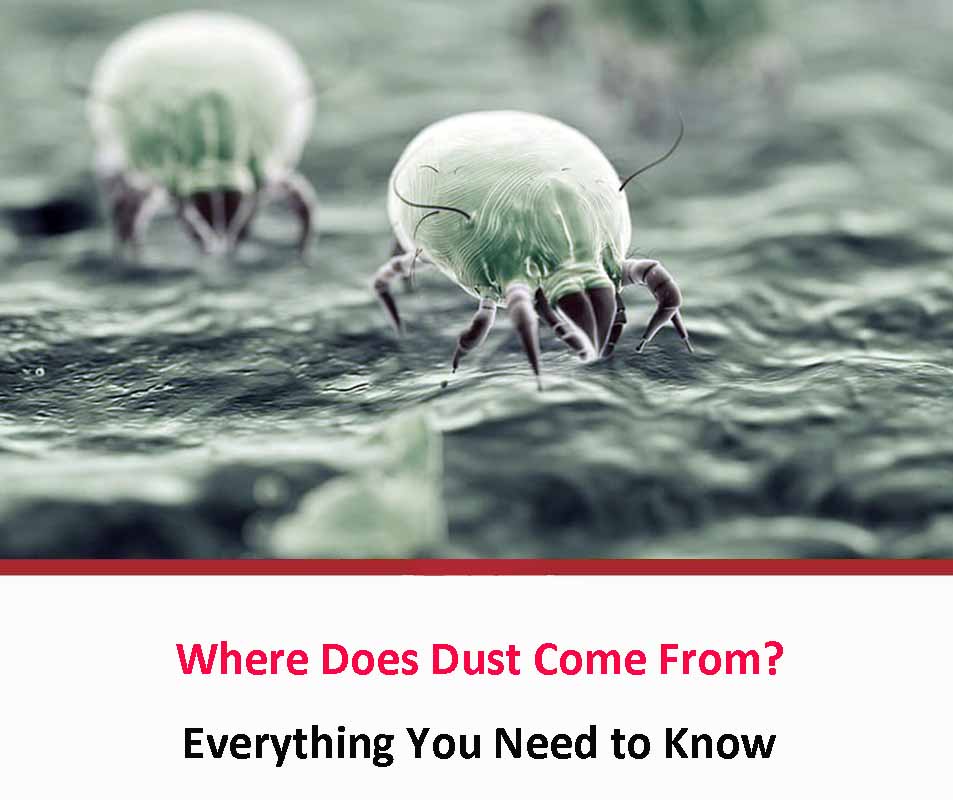Are you allergic to dust? If yes, you are probably looking for a way to get rid of endless dust particles that gather inside your house.
But, even if you do not dust allergic, you should know that it can deteriorate the air quality, and the components can cause lungs and other health problems.
So, here you will find everything that you need to know about dust and how to get rid of it effectively.
What Is House Dust Made Of?
Contents
- 1 What Is House Dust Made Of?
- 2 What Causes A Lot Of Dust In Your House?
- 3 Why Do Empty Houses Get Dusty?
- 4 Why Is Dust Grey?
- 5 Where Does Dust Come From?
- 6 Factors Causing Dust
- 7 How Does Dust Get In Your House?
- 8 Health Issues Caused By Dust
- 9 Symptoms Of Dust Allergy
- 10 How To Reduce Dust In Your House
- 11 Tips For Removing Dust Particles
- 12 Does Opening Windows Reduce Dust?
- 13 Are There Germs In The Dust?
- 14 Final Words
House dust is a mixture of hair, dust mites, clothing fibers, sloughed-off, bacteria, skin cells, dead bugs, pollen, soil particles, specks of plastic, and many more. It depends upon where you live, the climate, and how many members live in your house.
What Causes A Lot Of Dust In Your House?
The amount of dust depends upon several factors like the season, where you live, how often you clean, whether you have pets, and how many members live in your house.
You should know that the dust found in homes is composed of over 50% dead skin cells, and the rest comes from human hairs, textile fibers, animal fur, plant pollen, paper fibers, burnt meteorite particles, soil minerals, and many more materials that you could find in the local environment.
You should know that dust is the combination of both indoor and outdoor particles that float through the air and settle down on the surface.
Why Do Empty Houses Get Dusty?
As discussed above, dust can also gather in empty houses because it is composed of dead skin cells and other tiny materials that you could find in the local environment. Apart from this, vacant houses can be dusty due to deterioration of interior materials such as breakdown of ceiling material because of age and other factors. You should know that most of the houses are not airproof, which means dust can slip right into the house through tiny spaces easily.
Why Is Dust Grey?
Dust is composed of microscopic particles, which means these tiny particles won’t be able to reflect light collectively as well as individually. That’s why dust is likely to appear grey.
Where Does Dust Come From?
Dust can come from out of nowhere and sometimes right after you have just cleaned up. You should know battling with dust is endless, but it is worth fighting for. As you already know, dust is the combination of particles found in indoor and outdoor environments that floats along with the air and slips right onto the surfaces.
According to recent research, the amount of dust gathered inside the house differs.
Factors Causing Dust
- The climate of the area you live in.
- The age of your house.
- The number of people living in your house.
- The cleaning, cooking, and smoking habits of occupants.
How Does Dust Get In Your House?

Dust is a mixture of minute particles, which can easily float in the air and get inside your house. Dust would find a way into your house even if you close your windows. You should know that houses are not airproof, which means dust can get inside your house through tiny openings.
Apart from that, you should avoid wearing dirty shoes in your house as it could bring a lot of dust to your house. And you already know that dust is mostly composed of dead skin cells, which means even if you have taken every measure to prevent dust from getting inside, you might also find some dust in your house.
Health Issues Caused By Dust
Having dust in your home would not only make you feel dirty but also impact your overall health. Although the size and type of dust particles determine the toxicity and area of respiration, it won’t be very pleasant.
Usually, larger dust particles are blocked inside the nose and breathed out, but the finer ones can easily reach your lungs and could be harmful to your overall health.
You should know that exposure also affects your health. The longer you are exposed, the more small particles you are likely to breathe in. Even though you don’t have a dust allergy, you can experience some of the symptoms mentioned below.
Symptoms Of Dust Allergy
- Runny nose
- Cough
- Itchy throat
- Watery eyes
- Sneezing
- Nasal congestion
How To Reduce Dust In Your House
You should know that eradicating every dust particle in your house is impossible, but you can eliminate most of the quantity for good. All you have to do is consider the below-mentioned tips for removing dust particles in your house.
Also Read: How to Kill Dust Mites With Tea Tree Oil
Tips For Removing Dust Particles
· One of the best ways to do this is to use a wet cloth. All you have to do is wipe the surface with a damp cloth where you see dust; it will trap most of the particles.
· You should clean the top drawers and surfaces because dust is likely to settle down where you have already cleaned.
· You must change your bedding every week because pet dander, dust mites, and dead skin are likely to be found in bed. So, washing sheets every week helps in cutting down the pollutants in your room.
Does Opening Windows Reduce Dust?
Unfortunately, keeping the windows open would increase the amount of dust in your home rather than reducing it. As you already know that there are a lot of dust particles in the outside air, including spores, pollen, sand, dirt, and many more.
Are There Germs In The Dust?

Yes, dust is made up of different kinds of materials such as dead skin, soil, fibers, etc. You should know that dust can also compose hundreds of different microbes’ species like viruses, fungi, and bacteria. That clearly states that germs definitely live in the dust.
Final Words
Now you know how to get rid of dust in your home, so, what are you waiting for? First, clean your home and reduce the chances of any dust allergy.






